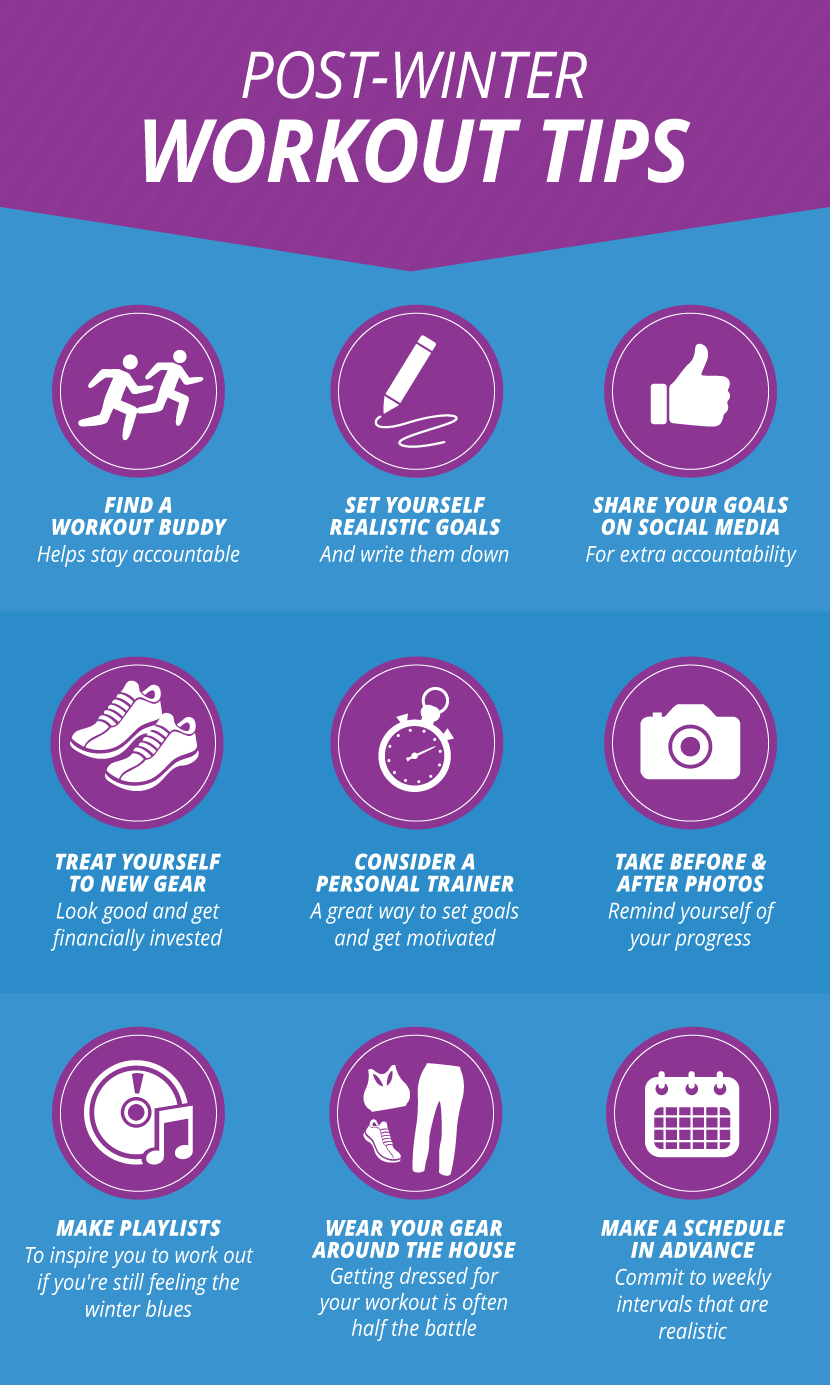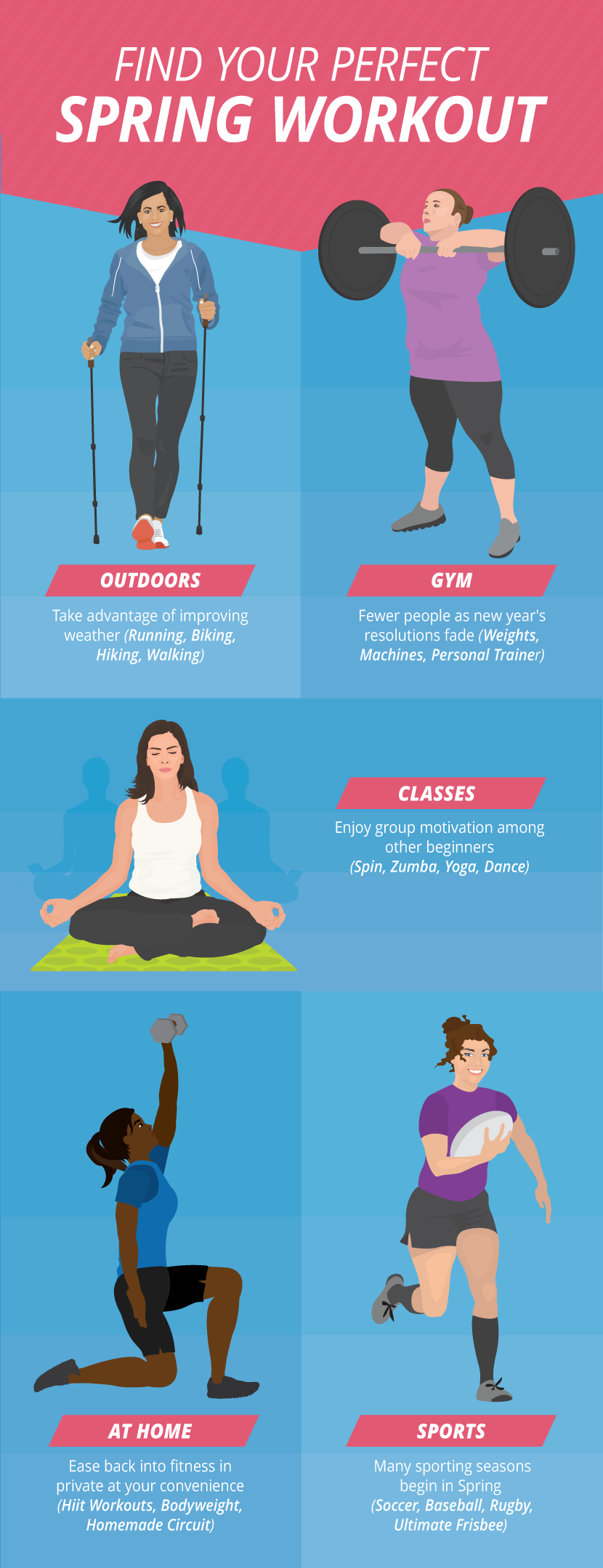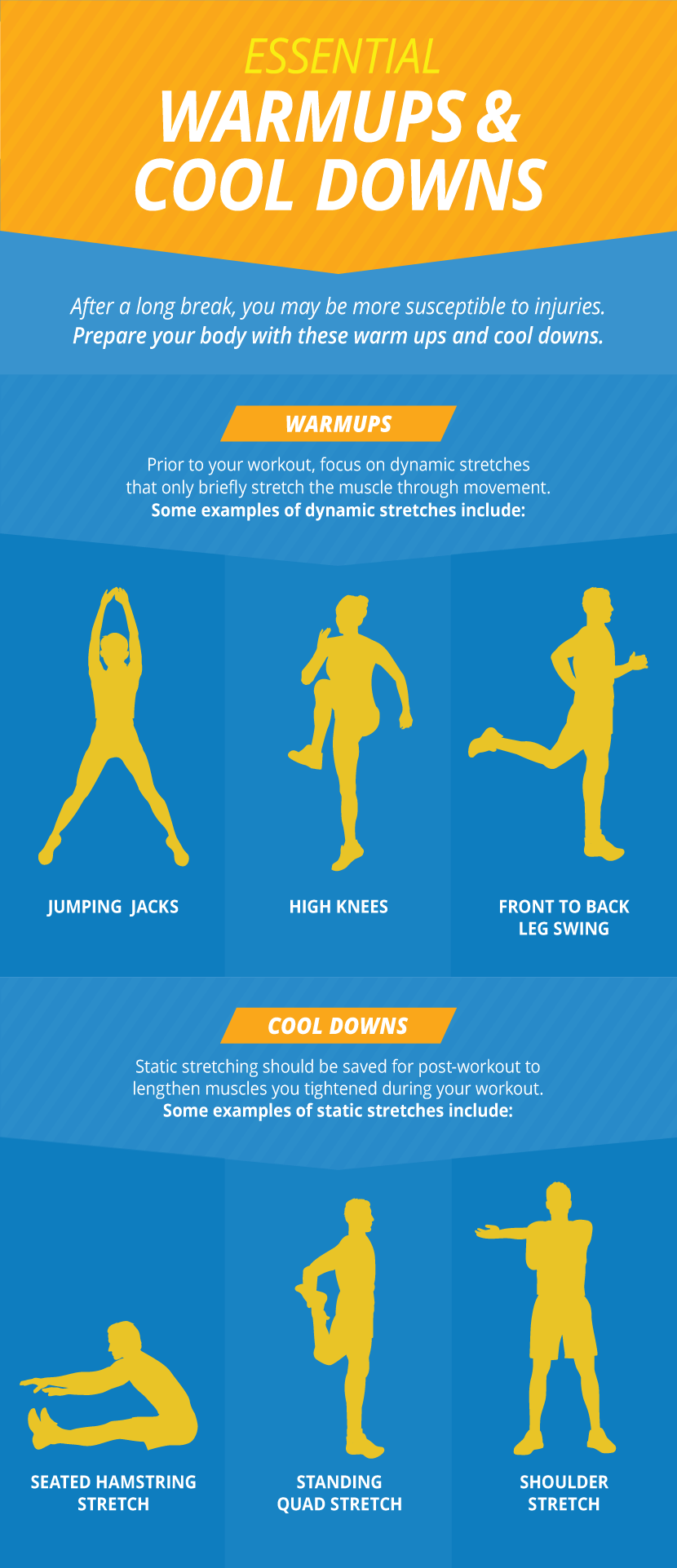Spring Back Into Shape:
How to Ease Your Way Back Into Fitness After The Winter
As much as we all try to stick to our workout routines no matter what,
the cold weather and shorter days during the winter often lead to less working out and more Netflixing.
Then suddenly the days start getting longer, the temperature starts to rise, and you realize that swimsuit season is right around the corner!
It’s time to spring back into shape, but where and how should you start?
Find a workout partner – Not having someone to exercise with has been cited as a barrier to regular workouts among both men and women.
While you don’t have to have a workout partner to create a successful fitness routine, there are many benefits to working out with a friend.
Not only will you have an extra layer of accountability to get to the gym if your friend is waiting for you there,
you may be more willing to try new types of workouts if you aren’t doing it alone.
Been thinking of trying an aerial fitness class, but afraid of looking like a fool? Grab a friend and laugh at yourselves while you get in a hard workout!
Always wanted to incorporate strength training, but feel intimidated in the weight room? There’s strength in numbers.
A workout partner can also help motivate you when you feel like giving up during the middle of a routine;
plus, there’s someone to commiserate with after a particularly hard workout.

Set realistic goals – Even if you were running six miles a day or deadlifting 200 pounds before the winter hibernation kicked in,
chances are you’re going to need to start slow as you get back into a workout routine. Start by committing to working out two to three times per week.
That will help you get back into the habit of making it a priority. Once you’ve established that routine,
add a couple of days to work your way back up to your pre-winter workout routine.
You’ll also need to be realistic about the results you expect to see. If you’ve been totally sedentary all winter and packed on the pounds,
don’t expect to start working out in April and have a six pack by Memorial Day.
Choose the workout that’s best for you – When you’re just getting back to a workout routine,
should you do full-body workouts or focus on one body part at a time to space things out?
A lot depends on your individual goals and abilities. It also depends on how much time you have.
If you’re looking to burn fat and lose weight, full-body workouts are much more efficient,
particularly when using compound movements that use more than one muscle group at the same time.
Full-body workouts may also mean you’ll need to spend fewer days in the gym.
If you’re especially pressed for time, high-intensity interval training (HIIT) workouts are a great, but very challenging, option.
HIIT pairs high-intensity movements with lower-intensity movements to keep your body in peak fat-burning and muscle-building condition throughout the workout.
If your goals are more about building muscle, you may decide to focus on one body part at a time.
The one caution here is that you may be more likely to skip the muscle groups you don’t particularly enjoy training until you establish a regular routine.
If you are only planning to work out three days per week, this approach may not be the best for you.
The most important thing is to choose a workout that you’ll actually enjoy doing. As you’re reestablishing a routine,
it’s a lot easier to convince yourself to go to the gym if you’re looking forward to it.
Use this as an opportunity to try a new group fitness class like Zumba or spin. Not only will being in a group help motivate you,
these types of classes are usually set to upbeat music that helps the time pass quickly.

Don’t skip the warm-up – If you’re especially anxious to get back to a routine and see results,
it may be all too easy to think that you’re better off skipping
a warm-up and spending your whole hour at the gym on a hard workout.
It’s a trap you’ll need to work hard to avoid. A proper warm-up is not only essential
to your safety, it actually leads to a much more beneficial workout! That’s because a warm-up prepares your body for the exercises you’re about to do,
loosens up your muscles and joints so you don’t pull or sprain something, and gets your heart rate going.
This means that by the time you actually get to your workout, you’re already burning calories and stoking your metabolism.
It’s also really important to realize that walking from your car to the treadmill doesn’t count as a proper warm-up.
If you aren’t sweating at least a little bit or breathing hard by the end of your warm-up, you aren’t ready for the really heavy lifting.
A good warm-up routine might consist of foam rolling (especially if you’re sore from a prior workout),
dynamic stretches (those done with movement, like walking toe taps and jumping jacks),
and bodyweight exercises that mimic the movements you’ll be doing during your workout.
For example, you might add high knees and butt kicks to your warm-up routine to prepare for a run or add some bodyweight squats to prepare for leg day.

Don’t forget to stretch! – Just as important as the warm-up is the cooldown and stretching portion of your workout routine.
Like the temptation to skip the warm-up and get straight into your workout,
many people finish their workout and head straight out the door without even considering that they should stretch or otherwise cool down.
A good cooldown routine will help decrease soreness after a workout, which can be essential to helping you stick to your workouts.
After all, who wants to go to the gym when you’re still sore from the last time?
The cooldown period is important for increasing circulation and bringing your heart rate down slowly.
Consider adding a walk at the end of your run before you come to a complete stop.
The cooldown also helps return your muscles and posture to their natural position after having been shortened during the workout,
especially if you were doing weight training. Post-workout is the time to do static stretching (the kinds of stretches you hold for at least 10 seconds).
Focus on muscles that are particularly tight or that you utilized during your workout. Some great standbys are the standing quad stretch,
figure four stretch, half-kneeling hip flexor stretch, and chest stretch using a wall or door frame.
Make sure you fuel properly – What’s the use of a good workout routine if you aren’t eating properly? If your goal is to lose weight,
nutrition is an integral part of that, and poor nutrition can easily undo all your hard work in the gym. Nutrition isn’t just important if you’re trying to lose weight;
it’s also important to make sure you’re eating enough and drinking enough water to safely fuel your workout.
If your workouts are making you dizzy or lightheaded, you are either dehydrated or not eating enough prior to your workout.
Just like fueling beforehand is important, eating for muscle recovery should also be a priority. Try to eat something with protein within an hour of your workout.
This is the period during which your muscles can utilize the protein most effectively to repair and rebuild. Abs aren’t the only muscles built in the kitchen.
Don’t beat yourself up – Getting back into a workout routine isn’t easy. Even if you start slow and have a workout buddy,
there may be days when you give in to the call of the couch.
The worst thing you can do on these days is beat yourself up and decide that it just isn’t worth it.
Give yourself a little wiggle room and cut yourself some slack, especially early on. Don’t let missing a single day take the steam out of your engine!
Embed the article on your site

